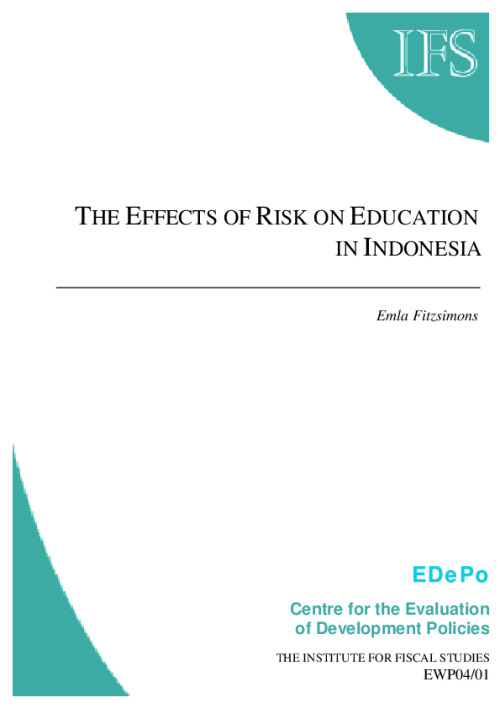We study the effects of risk and uncertainty on education and child labour in developing countries. Households that face more uncertainty, and with limited or no access to formal insurance, will have a higher motive for self-insurance and this may, under certain plausible conditions, have adverse consequences for child education. The model predictions are tested using Indonesian data. A negative effect of risk on education would constitute some evidence of children being used as insurance tools to smooth consumption. On the other hand, whilst a negligible effect of risk may indicate that formal insurance markets are well-functioning, it might also reflect the fact that households are using a wide range of other self-insurance mechanisms instead. A key contribution of the paper is to decompose risk into aggregate village and idiosyncratic components using five years of wage data on the main earner of the household. Results indicate that in small rural villages where one might expect formal insurance markets to be thin or lacking, idiosyncratic risk has no significant effect on the child's education. There is evidence however, that aggregate village risk affects education adversely in these villages. These findings are in line with a range of literature which shows that aggregate risk is more difficult to diversify than idiosyncratic risk. This suggests that policy should carefully consider the relative efficiency of household self-insurance mechanisms vis-á-vis the crowding out of such mechanisms by formal insurance provision.









